To go Back at any time,
use Browser's "Previous Page"
Thankfully, the rain showers that hung over us all day from Invercargill to Dunedin, let up as we arrived in this busy college town. We were just in time for Orientation Week at the University of Otago with all the hustle and all-night parties that go with it. Suffice it to say, our visit to Dunedin was a striking contrast to the peacefulness of Invercargill and Te Anau.
The town itself is pleasant enough and possesses a fine harbor:

The downtown is well-known for its “Octagon” which features two concentric, nearly circular streets. At its heart is a statue of Robbie Burns, not surprising as the first European settlers were Scottish. Behind the poet’s statue are the Municipal Chambers, housed in this striking building:

There are other structures worth mentioning in Dunedin. The Clocktower Building on the University of Otago campus, for example, is a city landmark:
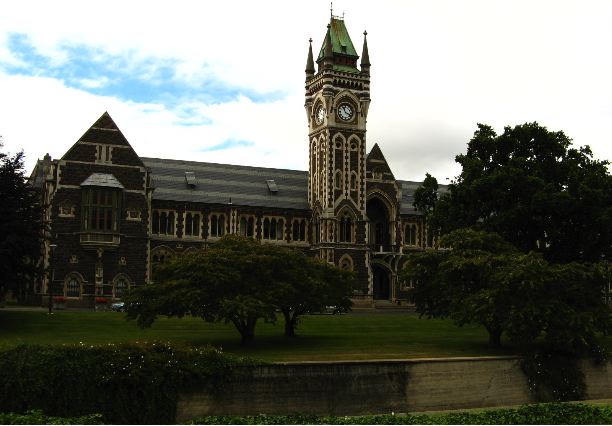
The Dunedin Railway Station which opened in 1906 is quite an eyeful. Its rich embellishments earned its architect the nickname “Gingerbread George”. Of course, he was also knighted for this achievement:
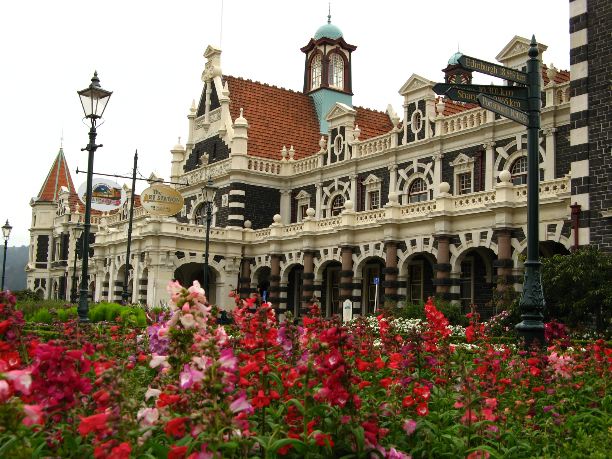
Though one hundred years old, the Station is well cared for inside and out:
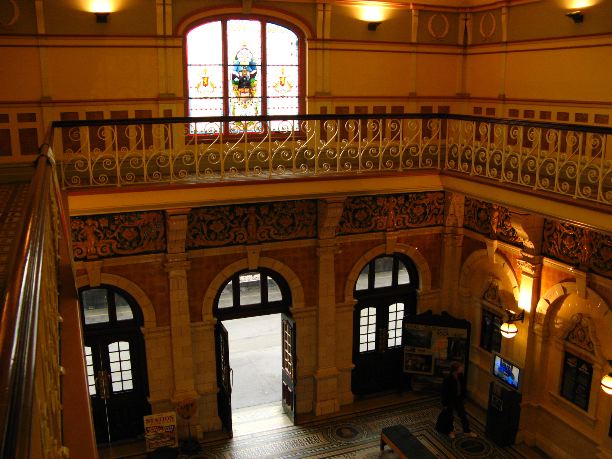
Had the weather been sunny and had we the time to explore the abundant marine life of the nearby Otago Peninsula, our feelings for Dunedin might have been much warmer. As it was, we encountered beautiful beaches only after driving to Moeraki about 50 miles north of Dunedin:

The main draw here is not the beach itself but the remarkable Moeraki Boulders. They’re down the beach in the opposite direction from the photo above:
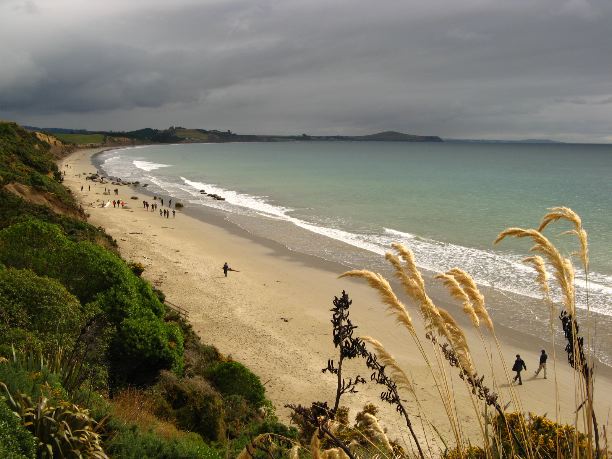
Only when you get close do you realize how nearly spherical they are:
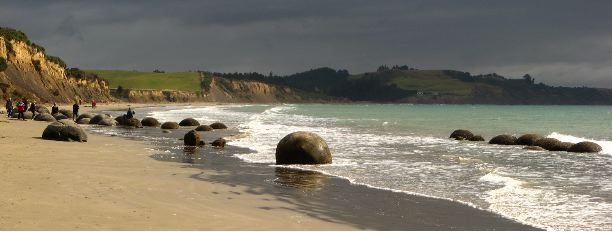
The largest of these boulders is over 6 feet in diameter and has an estimated weight of 7 tons. Their veined surfaces give them an appearance like turtle shells:
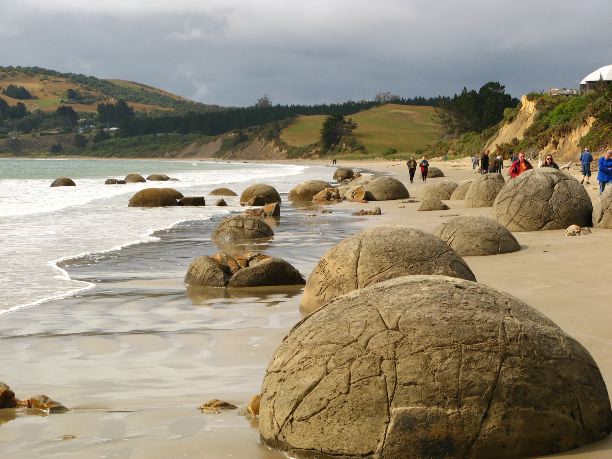

The official explanation for their creation is that chemicals in the mudstone cliffs behind the beach crystalized around a nucleus (like a pearl) eons ago and were eventually exposed by beach erosion. Supposedly, surf action had nothing to do with the creation of these big round rocks (which you may call “septarian concretions”, if you like).